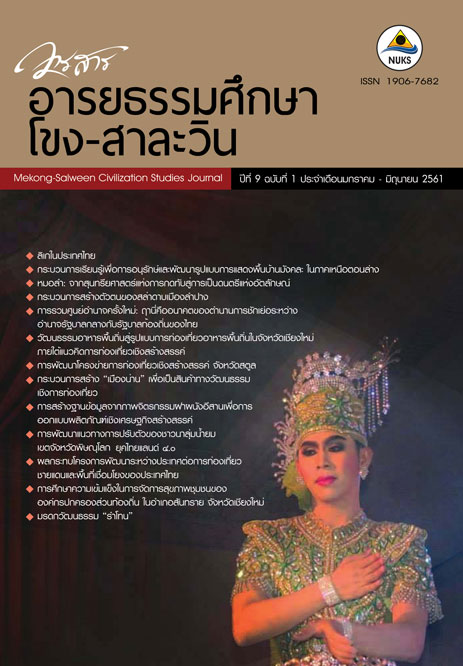Likay in Thailand ลิเกในประเทศไทย
Main Article Content
Abstract
The objective of this research is to study and to gather information about Likay performances in Thailand as well as to create a list of Likay artists in Thailand. The scope of the study is limited to ten provinces, includes Chai Nat, Singburi, Ang Thong, Ayudthaya, Lopburi, Suphanburi, Bangkok, Nonthaburi, Samudprakarn, and Prathumthani. These provinces are found to have the majority of the Likay performances available to a certain extent.
This study revealed that Likay performance has been developed from Suad Khaek (Islamic chant) since the reign of King Rama V (1868-1910). In its development, Likay has been integrated with lyric drama and spoken drama and was first performed at Chao Praya Petch Pranee Theatre. This new form of Likay is called ‘Likae Song Kruang’, which refers to elaborated and silvery costumes as a mimic of high noblemen. Later, Kru Dokdin Suasa-nga invented Rajanikleung song that was regarded as a foundation of Thai Likay. At that time, only male actors performed both gender roles. During the period of his student, Kru Homhuan Naksiri has extended Rajanikleung song to be longer and easier to sing. This lyric pattern has been continuing up until the present performance. During that period, Likay male and female actors performed their own gender roles and invited teachers from the royal court to teach. Later, in competition with Look Thung (Thai folk music) and music band, Likay has modernized itself by enlarging the size of the stage, which is called Wetee Loy Fah. Moreover, Likae became ‘Likay Concert’ with acoustic amplifiers as loud as Look Thung band. In 1957 Likae was first broadcast on television and later on radio as well as recorded on videotape, VCD, and cable television respectively. At present, Likay has been promote through online media and facebook through such development, Likay has been seen to flourish through its improvement of costume such as a replacement of fake diamond made of white glass with crystal. There are a number of new Likay stars who also incorporate the role of Look Thung singers. This trend of popularity attracted many fan clubs. Also, there are an increasing number of child performers who appeals to Likay admirers on a large scale.
This research gathers information of Likay performers according to the classification set by provincial Likay committee in ten provinces of study. They categorized Likay into two groups specified by performers’ age and experience, which are the ‘Likay master’ and the ‘Likay star’. The study found 285 artists who are included in this classification set. There are 163 artists in the Likay masters group and 122 artists in the Likay star group. In conclusion, Likay, although a folk wisdom heritage, is considered as Thai national treasure. Likay has been continuously developed to catch up with a current situation. At the same time, Likay inherits its traditional mode of performance skills, expertise, and wisdom from one generation to another. This intellectual knowledge is worthy to be considered as cultural heritage.
Downloads
Article Details
References
Chopkrabuanwaan, J. (1981). Yikey jak Dongdin thueng Hoomhuan. Bangkok. Chophaya.
Map of Thailand. 20 July. 2013. https://99bayresort.com.
Natphinit, B. National Artist, Likey. Interviewed, 16 January 2011.
Suansri, P. Honorable artist. Interviewed, 21 December 2012.
Virulrak, S. (1996). Likey. Bangkok. Kurusapa Printing Ladphrao.
Virulrak, S. Emeritus Propfessor, Ph.D. Interviewed, 20 December 2012.


